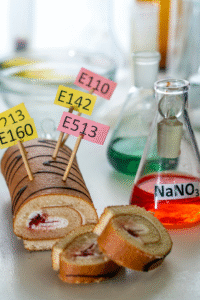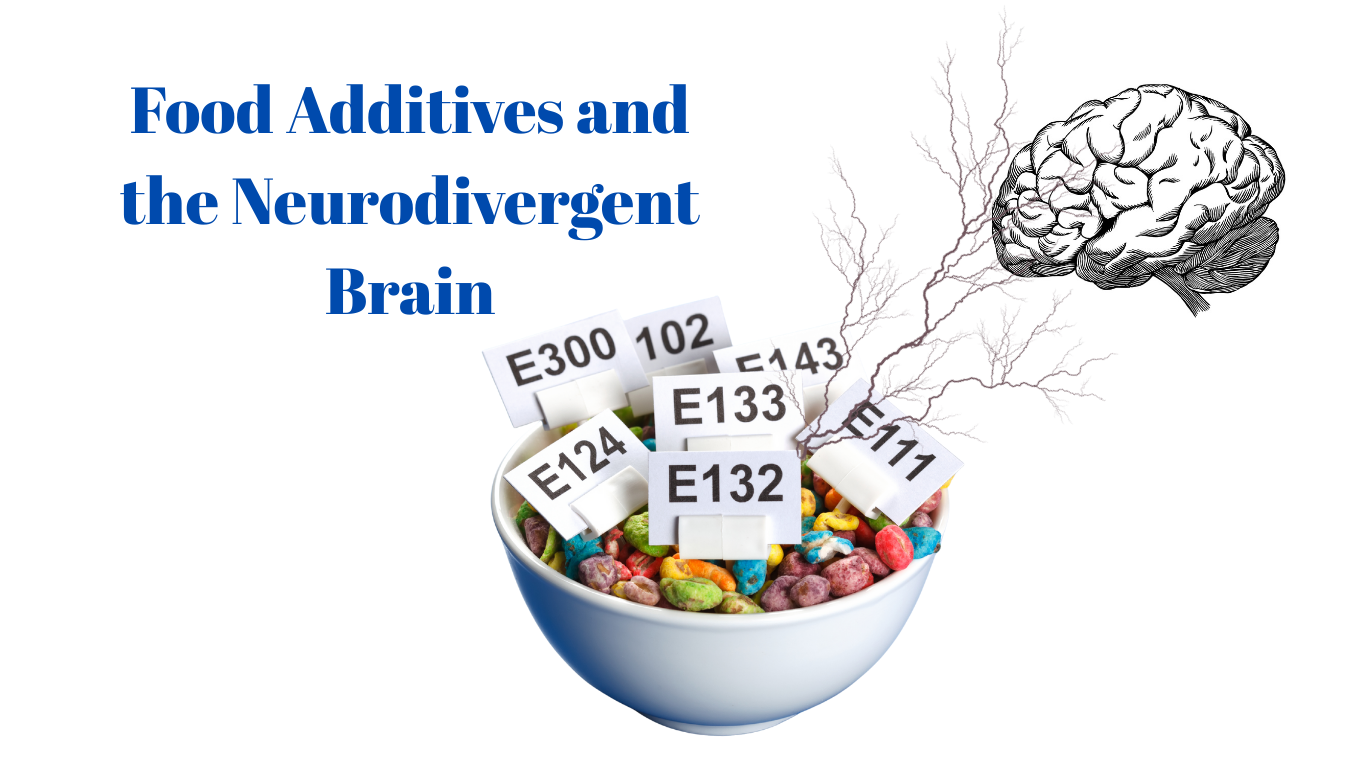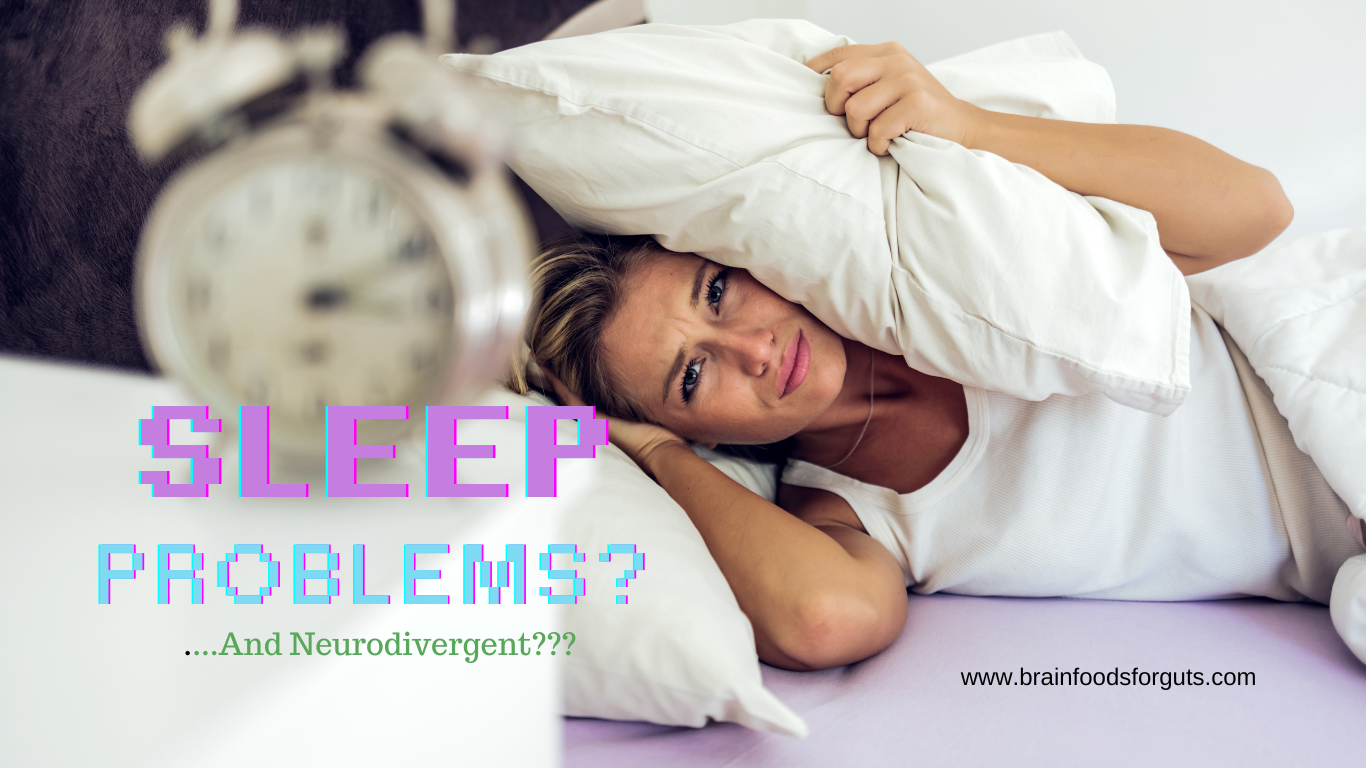“Why does my child get hyper, emotional, or unfocused after certain foods?
It is a question I get asked very frequently as a public health nutritionist. As the parent of a neurodivergent child, I have navigated this issue myself.
- Sometimes, it’s not the sugar.
- It’s what’s added to the food.
- It’s not the food.
These hidden ingredients, called food additives, can impact behaviour, mood, focus, sleep, and inflammation in the brain. While not all additives are harmful, some are known to trigger reactions, especially in children with ADHD, Autism, sensory processing challenges, or other neurodevelopmental differences.
In this blog, I will explain:
- What food additives are
- Which additives may affect your child’s brain?
- How they affect neurodivergent children
- Safer food choices and alternatives
What are food additives?
Food additives are substances combined with foods to enhance taste, colour, texture, shelf life, or appearance.
Common examples include artificial colours, sweeteners, preservatives, stabilisers, and flavour enhancers.
They make food look good, taste better, and last longer-but some can adversely affect the brain, especially in children.
Why Neurodivergent Children Are More Sensitive
Children with Autism, ADHD, Dyslexia, or Sensory Processing Disorder commonly exhibit:
✔ Gut inflammation
✔ Higher sensory sensitivity
✔ Lower ability for detoxification
✔ Sleep challenges
✔ Powerful reactions to environmental triggers
This means even small amounts of additives can cause changes in behaviour, emotional dysregulation, restlessness, mood swings, brain fog, or hyperactivity.
Top Food Additives That Impact Brain Health
1️⃣ Artificial Food Colors (E100–E199)
Examples:
Yellow 5 (Tartrazine) — E102
Red 40 (Allura Red) — E129
Brilliant Blue — E133
Consequences might include:
- Hyperactivity
- Mood swings
- Irritability
- Attention difficulties
- Emotional meltdown
Research shows that artificial colours can make ADHD symptoms worse in children.
2️⃣ MSG (Monosodium Glutamate) – Flavour Enhancer
Found in instant noodles, chips, sauces, takeaways
Brain Effects:
- Headaches
- Anxiety
- Brain fog
- Restlessness
- Sleep problems
MSG overstimulates brain cells, especially in sensitive children.
3️⃣ Artificial Sweeteners (E950–E967)
Aspartame (E951), Sucralose (E955), Saccharin (E954)
Commonly found in “sugar-free” snacks, diet drinks, and yoghurts.
Caution: May cause
- Mood changes
- Gut imbalance
- Memory problems
- Poor concentration
Aspartame has been linked to mood and anxiety issues in children.
4️⃣ Sodium Benzoate (Preservative E211)
Used in soda, fruit drinks, flavored milk, and sauces.
Linked to:
- Hyperactivity
- Inflammation
- Irritability
- Allergic reactions
5️⃣ High-Fructose Corn Syrup/Sugar Overload
While not an additive, it’s heavily processed and is commonly combined with additives.
Brain Effects:
- Poor concentration
- Low energy
- Mood crashes
- Gut issues
| Brain Impact | What Happens |
| Hyperactivity | Overstimulation of the nervous system |
| Brain Fog | Slowed thinking, low focus |
| Irritability | Mood swings, frustration |
| Inflammation | Can worsen sensory or behavioural symptoms |
| Sleep Disruption | Affects melatonin and cortisol |
| Gut-Brain Disruption | Triggers gut imbalance, affecting emotional control |
Safer and Neuro-Friendly Alternatives
| Food Swap Category | Safer Alternative |
| Artificial colours | Turmeric, beetroot, spirulina, paprika |
| MSG | Herbs, garlic powder, lemon |
| Sugary treats | Dates, dark chocolate (70%+ cocoa), honey |
| Sweet drinks | Fruit-infused water, herbal tea |
| Candy | Homemade fruit gummies, nut and date bars |
Try these brain-loving, additive-free snack ideas:
| Smart Snack | Why It Works | |
| Dark Chocolate (70%+) | Boosts mood + brain focus | |
| Pumpkin seeds | High in magnesium and zinc | |
| Blueberries | Packed with antioxidants | |
| Homemade popcorn | No artificial flavors | |
| Nut butter + apple slices | Blood sugar balance |
A True Story…
A mother once told me,
“My autistic son had emotional meltdowns every evening. We thought that was just sensory overload, but after coloured cereal and flavoured yoghurt were taken out of his diet, he stabilised in one week.”
Not magic. Just fewer artificial additives.
How to Quickly Check Food Additives
1️⃣ Invert the food pack.
2️⃣ Look for “E-numbers,” artificial colours, sweeteners, and preservatives.
3️⃣ Search them here:
https://ec.europa.eu/food/food-feed-portal/screen/food-additives/search
Final Message to Parents
You don’t need a perfect diet. Just better awareness. Understanding food additives gives you power: the power to support your child’s focus, calm, learning, behaviour, and brain health, one food choice at a time.
Reliable Resources for Parents
Food Additives Database: EU: See: https://ec.europa.eu/food/food-feed-portal/screen/food-additives/search
Brainfoods Nutrition Support Course: Join: https://selar.com/950yni9y15



